- Home
- Oliver Sacks
Seeing Voices Page 19
Seeing Voices Read online
Page 19
There are two related issues here. One has to do with parents being able to “let go” of their children: all parents must do this, but it may need to be done at an earlier age, in some ways, with a deaf child, so that he may start on his own, so-special development. The other issue has to do with the deaf community. A deaf child does not need to be “protected” from the deaf community; the deaf community is not lying in wait to steal him from his parents. On the contrary, the deaf community is the greatest resource there is for a deaf child, and one which can be (with the parents’ cooperation) a liberating force, allowing the child to acquire language and develop in his own way. It requires a special generosity of spirit for parents to realize this—for them to perceive their deaf child as he is, to unshackle him from their own wishes and needs, and to allow him to develop as a free and independent—though different—being. The deaf child needs a double identity. Allowing this allows mutual respect and love, whereas forbidding it is all too likely to lead to the estrangement of which Schein and Mow speak.
77. We can, of course, only guess at the origins of language—speech or Sign—or make hypotheses or inferences which cannot be directly proved or disproved. Speculation in the nineteenth century reached such peak proportions that the Paris Société de Linguistique, in 1866, finally banned the presentation of any further papers on the subject; but paleolinguistics has become a science, and there is much evidence now that was not available a century ago—evidence which points to the prehistorical origin of language in signs. This, indeed, is the title of Stokoe’s 1974 paper, “Motor Signs as the First Form of Language” (see also Hewes, 1974).
There are intriguing direct observations of gestural communication between (hearing) mothers and infants prior to speech (see Tronick, Brazelton, and Als, 1978)—and if ontogeny does recapitulate phylogeny, this provides a further suggestion that the earliest human language was gestural or motor.
78. Lévy-Bruhl, describing the mentality of “primitives” (the term “primitive” for him implies earlier or more primordial, never inferior or childish), speaks of “collective representations” as central in their language, orientation, and perception. These are quite different from abstract concepts—they are “more complex states in which emotional or motor elements are integral parts of the representation.” He speaks similarly of “image-concepts,” which are both undecomposed and undecomposable. Such image-concepts are intensely visuospatial, tending to describe “the shape and contour, positions, movement, way of acting, of objects in space—in a word, all that can be perceived and delineated.” Lévy-Bruhl describes the widespread development of sign language in the hearing—sign languages that are parallel to spoken languages, and essentially identical in structure: “the two languages, the signs of which differ so widely as gestures and articulate sounds, are affiliated by their structure and their method of interpreting objects, actions, conditions.… Both have at their disposal a great number of fully formed visual-motor associations … which are called up in the mind the moment they are described.” Lévy-Bruhl speaks here of “manual concepts”—“movements of the hands in which language and thought are inseparably united.”
By the same token, when there is, as Lévy-Bruhl puts it, a “transition to higher mental types,” this absolutely concrete language has to give way, its sensorially particular, vivid, precise “image-concepts” being replaced by imageless (and, in a sense, flavorless) logical-abstract-general concepts. (It was similarly, Sicard tells us, necessary for Massieu to abandon his metaphors and turn to more abstract, generalized adjectives.)
Vygotsky and Luria, in their youth, were deeply influenced by Lévy-Bruhl and provide similar (but more exactly studied) examples of such a transition as “primitive” agricultural cultures were “socialized” and “sovietized” in the 1920s:
This [concrete] mode of thought … undergoes a radical transformation once the conditions of people’s lives change.… Words become the principal agents of abstraction and generalization. At this point people dispense with graphic thinking and codify ideas primarily through conceptual schemes … they overcome, in the course of time, their inclination to think in visual terms (Luria, 1976).
One cannot avoid a certain feeling of discomfort reading descriptions such as those of Lévy-Bruhl and the young Luria—descriptions that portray the concrete as “primitive,” as something to be replaced in the ascent to the abstract (this indeed has been a very general tendency in neurology and psychology for the past century). There should not be any sense of the concrete and the abstract as mutually exclusive, of the one being abandoned as one progresses to the other. On the contrary, it is precisely the richness of the concrete that gives power to the abstract. This is clearer if one is careful about defining it, and defines it in terms of “superordinate” and “subordinate.”
This proper (as distinct from conventional) sense of “abstraction” is central to Vygotsky’s vision of language and mind, his seeing their progress as the ability to impose superordinate structures that take in more and more of the subordinate, the concrete, by virtue of their inclusiveness, their broader perspective.
The new higher concepts [in turn] transform the meaning of the lower.… The child does not have to restructure all his earlier concepts … once a new structure has been incorporated into his thinking … it gradually spreads to the older concepts as they are drawn into the intellectual operations of the higher type.
A similar image is used by Einstein, with regard to theorizing: “Creating a new theory is not like destroying an old barn and erecting a skyscraper in its place. It is rather like climbing a mountain, and gaining new and wider views.”
In abstracting, or generalizing, or theorizing, as thus understood, the concrete is never lost—quite the reverse. As it is seen from a broader and broader viewpoint, so it is seen to have ever-richer and unexpected connections; it holds together, it makes sense, as never before. As one gains in generality, so one gains in concreteness; thus the vision of the older Luria that science is “the ascent to the concrete.”
The beauty of language, and of Sign in particular, is like the beauty of theory in this way: that the concrete leads to the general, but it is through the general that one recaptures the concrete, intensified, transfigured. This regaining and renewal of the concrete, through the power of abstraction, is radiantly visible in a partly iconic language like Sign.
Part III: The Revolution of the Deaf
1. One can be very close to (if not actually a member of) the deaf community without being deaf. The most important prerequisite besides a knowledge of and sympathy for deaf people is being a fluent user of Sign: perhaps the only hearing people who are ever considered full members of the deaf community are the hearing children of deaf parents for whom Sign is a native language. This is the case with Dr. Henry Klopping, the much-loved superintendent of the California School for the Deaf in Fremont. One of his former students, talking to me at Gallaudet, signed, “He is Deaf, even though he is hearing.”
2. Different social conventions arise in the intercourse of signers, dictated in the first place by the differences of eye and ear. For vision is more specific than hearing—one can move one’s eyes, one can focus them, one can (literally or metaphorically) shut them, whereas one cannot move or focus or shut one’s ears. And signing, so to speak, is lasered in a narrow beam, to and fro, between signers, and does not diffuse in all directions, acoustically, like speaking. Thus one can have a dozen different people signing at a table, in six different conversations, each conversation clear and distinct, none of them necessarily disturbing the others. There is no “noise,” no visual noise, in a room full of signers, because of the directionality of visual voices and of visual attention. By the same token (this was very clear at the huge student bar at Gallaudet, and I have seen it at large deaf banquets and conventions) one can easily sign to somebody at the other end of a large, crowded room; whereas yelling would be horrible and offensive.
There are many other (some,
to the hearing, rather strange) points of Sign etiquette. One must be very conscious of eye-lines and visual contact; and avoid inadvertently walking between people and interrupting this contact. One is free to tap on shoulders and to point—not done in hearing circles. And if one finds oneself overlooking a room full of signers, with three hundred Sign conversations clearly in view, one makes a point of not “overseeing” or eavesdropping, of only seeing what one is meant to see.
At NTID in Rochester, which was built in 1968 for deaf students, one can see an architectural corollary to this. The moment one enters, one can see that this is a building for visual beings—it is designed so that signing can be seen at great distances, and sometimes between floors. One would not shout from one floor to another, but it is perfectly natural to sign from one to another.
3. The deaf world, like all subcultures, is formed partly by exclusion (from the hearing world), and partly by the formation of a community and a world around a different center—its own center. To the extent that the deaf feel excluded, they may feel isolated, set apart, discriminated against. To the extent that they form a deaf world, voluntarily, for themselves, they are at home in it, enjoy it, see it as a haven and a buffer. In this aspect the deaf world feels self-sufficient, not isolated—it has no wish to assimilate or be assimilated; on the contrary, it cherishes its own language and images, and wishes to protect them.
One aspect of this is the so-called diglossia of the deaf. Thus a group of deaf people, at Gallaudet or elsewhere, converse in Sign among themselves; but if a hearing person should enter, they at once switch to signed English (or whatever) for a time, returning to Sign as soon as he is gone. ASL is often treated as an intimate and highly personal possession, to be shielded from intrusive or foreign eyes. Barbara Kannapell has gone to far as to suggest that if we all learned Sign, this would destroy the deaf world:
ASL has a unifying function, since deaf people are unified by their common language. But the use of ASL simultaneously separates deaf people from the hearing world. So the two functions are different perspectives on the same reality—one from inside the group which is unified, and the other from outside. The group is separated from the hearing world. This separatist function is a protection for deaf people. For example, we can talk about anything we want, right in the middle of a crowd of hearing people. They are not supposed to understand us.
It is important to understand that ASL is the only thing we have that belongs to deaf people completely. It is the only thing that has grown out of the deaf group. Maybe we are afraid to share our language with hearing people. Maybe our group identity will disappear once hearing people know ASL (Kannapell, 1980, p. 112).
4. Even those teachers who sign tend, however, to use a form of signed English rather than ASL. Except in the mathematical faculty, where a majority of the teachers are deaf, only a minority of the faculty now at Gallaudet is deaf—whereas in Edward Gallaudet’s day a majority were deaf. This, alas, is still the case generally with regard to the education of the deaf. There are very few deaf teachers of the deaf; and ASL, for the most part, is either not known to, or not used by, hearing teachers.
5. Over and above the general disadvantagedness of the deaf (not through their disability, but through our discrimination), there are all sorts of specific problems which arise from their use of a signed language—but these are only problems to the extent that we make them so. It is difficult for a deaf person, for example, to get adequate medical or legal care; there are a score of signing attorneys in the United States, but almost no signing physicians at all (and, as yet, very few paramedics or nurses who sign). There are scarcely any adequate emergency facilities for the deaf. If a deaf person becomes seriously ill, it is crucial to immobilize only one arm with IVs; to immobilize both arms may render him unable to talk. Similarly, it is often not realized that to handcuff a deaf signer is equivalent to gagging him.
6. Although the deaf are sometimes supposed to be silent, as well as to inhabit a world of silence, this may not be the case. They can, if they wish to, yell very loudly, and may do this to arouse the attention of others. If they speak, they may speak very loudly, and with very poor modulation, since they cannot monitor their own voices by ear. Finally, they may have unconscious and often very energetic vocalizations of various sorts—accidental or inadvertent movements of the vocal apparatus, neither intended nor monitored, tending to accompany emotion, exercise, and excited communication.
7. This resentment of “paternalism” (or “mommyism”) is very evident in the special edition of the students’ newspaper (The Buff and Blue) published on March 9, in which there is a poem entitled “Dear Mom.” This starts:
Poor mommy Bassett-Spilman
How her children do rebel,
If only they would listen
To the story she would tell
and continues in this vein for thirteen verses. (Spilman had appeared on television, pleading for Zinser, saying, “Trust us—she will not disappoint you.”) Copies of this poem had been reproduced by the thousand—one could see them fluttering all over campus.
8. Such considerations should be taken into account in relation to the current controversies about “special” schools or “mainstreaming.” Mainstreaming—educating deaf children with the nondeaf—has the advantage of introducing the deaf to others, the world-at-large (at least, this is the supposition); but it may also introduce an isolation of its own—and serve to cut the deaf off from their own language and culture. There is much pressure, in the United States, Canada, England, and elsewhere at this time, to shut down residential and other special schools for the deaf. Sometimes this is done under the aegis of civil rights for the handicapped, giving them the right to “equal access” or to the “least restrictive” educational environment. But the deaf—at least the profoundly and prelingually deaf, whose native and communal language is Sign—are in a very special, indeed unique, category. They cannot be compared with any other group of pupils. The deaf do not regard themselves as handicapped, but as a linguistic and cultural minority, who have the need, and indeed the right, to be together, to go to school together, to learn in a language which is accessible to them, and to live in the company and community of others of their kind.
Legislation for the handicapped, with its emphasis on equal access, takes no note of these special needs and requirements; even worse, it threatens the dissolution of a unique educational system which has also been fundamental in providing linguistic and cultural continuity for the deaf. In 1989 the state of Connecticut threatened to close the American School for the Deaf, the Hartford Asylum which was founded by Clerc and Gallaudet in 1817, which was not only the founder, but has been the guardian of deaf education in the United States for 173 years. Fortunately what would have been a rash and irrevocable move was postponed at the very last moment—but similar actions continue to threaten residential schools across the country.
The deaf student population, of course, is not homogeneous: it includes many postlingually deaf pupils, who are not native signers, and who do not identify themselves with the deaf community or with Sign; pupils such as these may indeed prefer to be mainstreamed. But there will always be prelingually deaf students whose early education and enculturation will be best accomplished in residential schools, and who must have at least the option of going to such schools, and not be mainstreamed by force. But such schools, founded in the eighteenth and nineteenth centuries, may have an anachronistic, Dickensian atmosphere. They need to be preserved, one feels—but modified, made more open, made less Victorian. Thus the old via Nomentana school in Rome, modified, is now enjoying a new lease of life, not only as a school, but as a club, an arts and theater center, and a research center for the deaf—and one to which, now, some hearing pupils and their parents also come (Pinna et al., 1990).
9. There is nothing quite equivalent, in the hearing world, to the crucial role of residential deaf schools, deaf clubs, etc.; for these, above all, are places where deaf people find a home. De
af youngsters, sadly, may feel deeply isolated, even estranged, in their own families, in hearing schools, in the hearing world; but they can find a new family, a profound sense of homecoming, when they meet other deaf people. Schein (1989) cites these words from a young deaf man:
My sister told me about the Maryland School for the Deaf.… My immediate reaction was one of anger and rejection—of myself. I reluctantly accompanied her to the School one day—and at long last began to come home. It was literally a love experience. For the first time, I felt less like a stranger in a strange land and more like a member of a community.
And Kyle and Woll cite a contemporary account of Clerc’s visit to a deaf school in London in 1814:
As soon as Clerc beheld this sight [the children at dinner] his face became animated: he was as agitated as a traveller of sensibility would be on meeting all of a sudden in distant regions, a colony of his countrymen.… Clerc approached them. He made signs and they answered him by signs. This unexpected communication caused a most delicious sensation in them and for us was a sense of expression and sensibility that gave us the most heartfelt satisfaction.
10. There was soon a division of the ways, with blind pupils being educated separately from the “deaf and dumb” (as the congenitally deaf, with little or no speech, used to be called). Among the two thousand deaf students at Gallaudet now, there are about twenty students who are both deaf and blind (most with Usher’s syndrome). These students, of course, must develop astonishing tactile sensibility and intelligence, as Helen Keller did.
11. The protagonists in this struggle, Bell and Gallaudet—both the sons of deaf mothers (but mothers with completely different attitudes to their own deafness), each passionately devoted to the deaf in his own way, were about as different as two human beings can be (see Winefield, 1987).

 Uncle Tungsten
Uncle Tungsten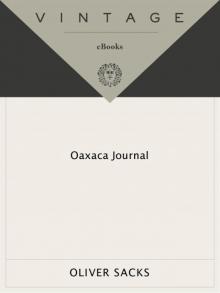 Oaxaca Journal
Oaxaca Journal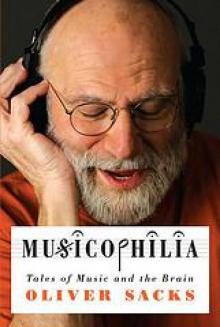 Musicophilia
Musicophilia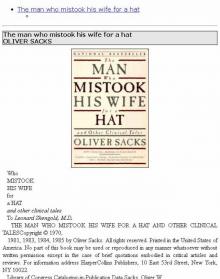 The man who mistook his wife for a hat
The man who mistook his wife for a hat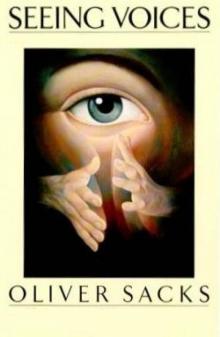 1989 - Seeing Voices
1989 - Seeing Voices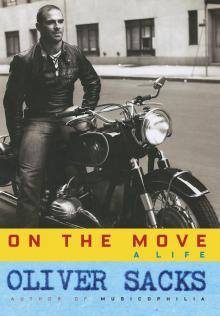 On the Move: A Life
On the Move: A Life 1996 - The Island of the Colorblind
1996 - The Island of the Colorblind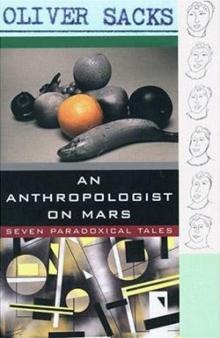 An Anthropologist on Mars: Seven Paradoxical Tales
An Anthropologist on Mars: Seven Paradoxical Tales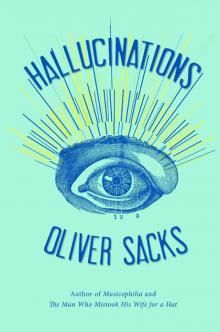 Hallucinations
Hallucinations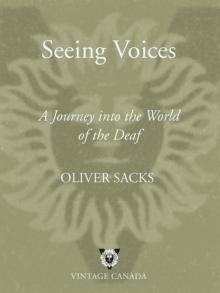 Seeing Voices
Seeing Voices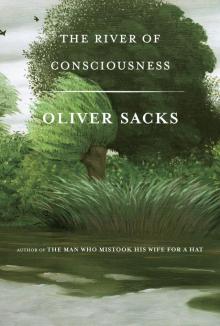 The River of Consciousness
The River of Consciousness Vintage Sacks
Vintage Sacks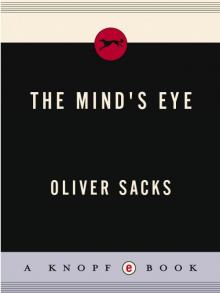 The Mind's Eye
The Mind's Eye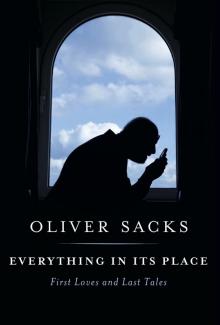 Everything in Its Place
Everything in Its Place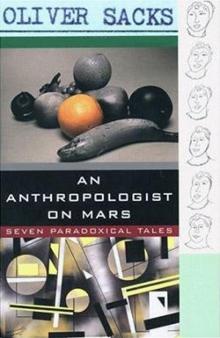 An Anthropologist on Mars (1995)
An Anthropologist on Mars (1995) Uncle Tungsten: Memories of a Chemical Boyhood (2001)
Uncle Tungsten: Memories of a Chemical Boyhood (2001)